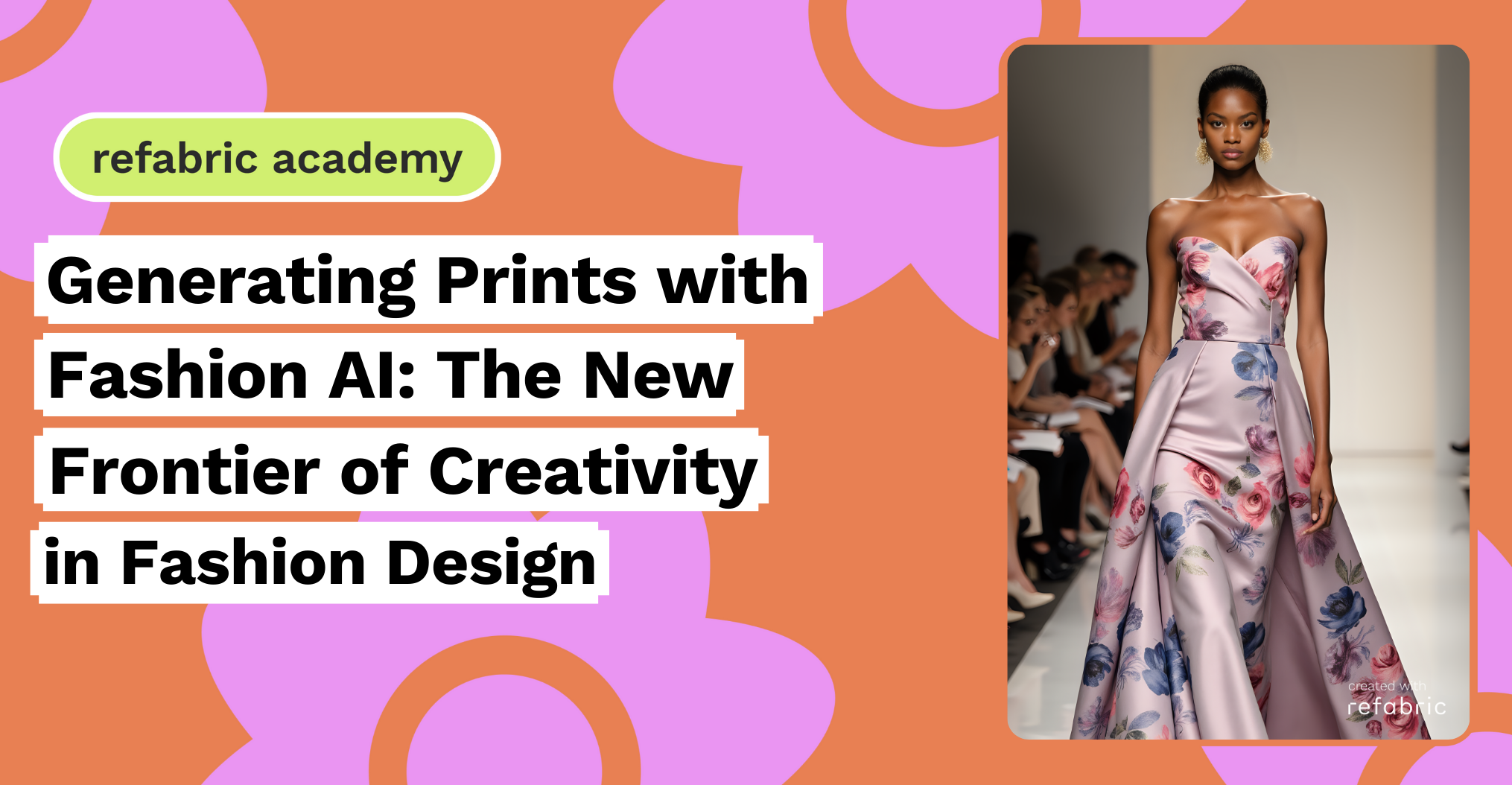Fashion AI is revolutionizing the textile design landscape, enabling designers to create intricate and unique prints that push the boundaries of creativity. This cutting-edge technology combines machine learning, algorithmic design, and data-driven insights to transform the way prints are conceptualized and produced, empowering fashion designers to explore uncharted creative territories.
Unlocking Infinite Design Possibilities
Fashion AI has introduced a realm of infinite possibilities for textile design by generating prints that blend traditional aesthetics with futuristic concepts. Unlike manual techniques, AI-powered tools can analyze vast datasets, including historical art, global cultural motifs, and current fashion trends, to generate designs that are both innovative and deeply rooted in diverse inspirations.
AI-driven platforms like Refabric allow designers to customize intricate prints by inputting specific parameters, such as color palettes, textures, and themes. For instance, a designer seeking to create a floral print with a surreal twist can use fashion AI to blend botanical patterns with abstract geometric shapes, achieving a unique aesthetic that would be nearly impossible to conceive manually. This capability democratizes access to high-level creativity, enabling small-scale designers to compete with established fashion houses.
Accelerating the Design Process
The traditional process of creating textile prints is time-intensive, often requiring multiple iterations and manual adjustments. Fashion AI streamlines this process by generating designs in seconds, allowing designers to visualize multiple variations of a concept instantly. This not only saves time but also fosters experimentation, as creators can explore countless design possibilities without the constraints of physical resources.
Enhancing Personalization and Customization
One of the most significant advantages of fashion AI in textile design is its ability to deliver unparalleled personalization. AI tools can analyze consumer preferences, market trends, and even individual customer feedback to create prints that resonate deeply with target audiences. This level of customization enables brands to offer exclusive, one-of-a-kind designs that cater to niche markets and specific tastes.
For instance, a boutique fashion label can use fashion AI to create limited-edition prints tailored to its local clientele’s cultural heritage or seasonal preferences. By combining algorithmic precision with human creativity, designers can ensure their collections stand out in a crowded marketplace, enhancing customer engagement and loyalty.
Bridging the Gap Between Art and Technology
Fashion AI is not merely a tool; it’s a bridge between art and technology, empowering designers to push their creative limits while embracing innovative solutions. The integration of fashion AI into print design allows for collaborations that were once unimaginable, such as blending hand-drawn sketches with algorithmically generated patterns to create hybrid designs that celebrate both human artistry and technological ingenuity.
For instance, renowned fashion designers are increasingly collaborating with AI specialists to co-create prints that redefine modern aesthetics. These partnerships exemplify how fashion AI can augment human creativity rather than replace it, offering tools that amplify a designer’s vision and capabilities.
The Future of Textile Design with Fashion AI
As fashion AI continues to evolve, its potential for textile design will only expand. Emerging technologies, such as augmented reality (AR) and 3D printing, are poised to further integrate with AI-driven print design, enabling designers to create interactive and multidimensional textiles. These innovations promise to redefine the sensory experience of fashion, captivating audiences with designs that transcend traditional boundaries.
Ultimately, fashion AI is not just transforming the way prints are created; it is revolutionizing the entire creative process. By offering tools that inspire, accelerate, and personalize design, AI in fashion design empowers fashion designers to explore new frontiers of creativity while addressing industry challenges such as sustainability and market competition. As a result, the future of textile design is brighter, more innovative, and more inclusive than ever before.
